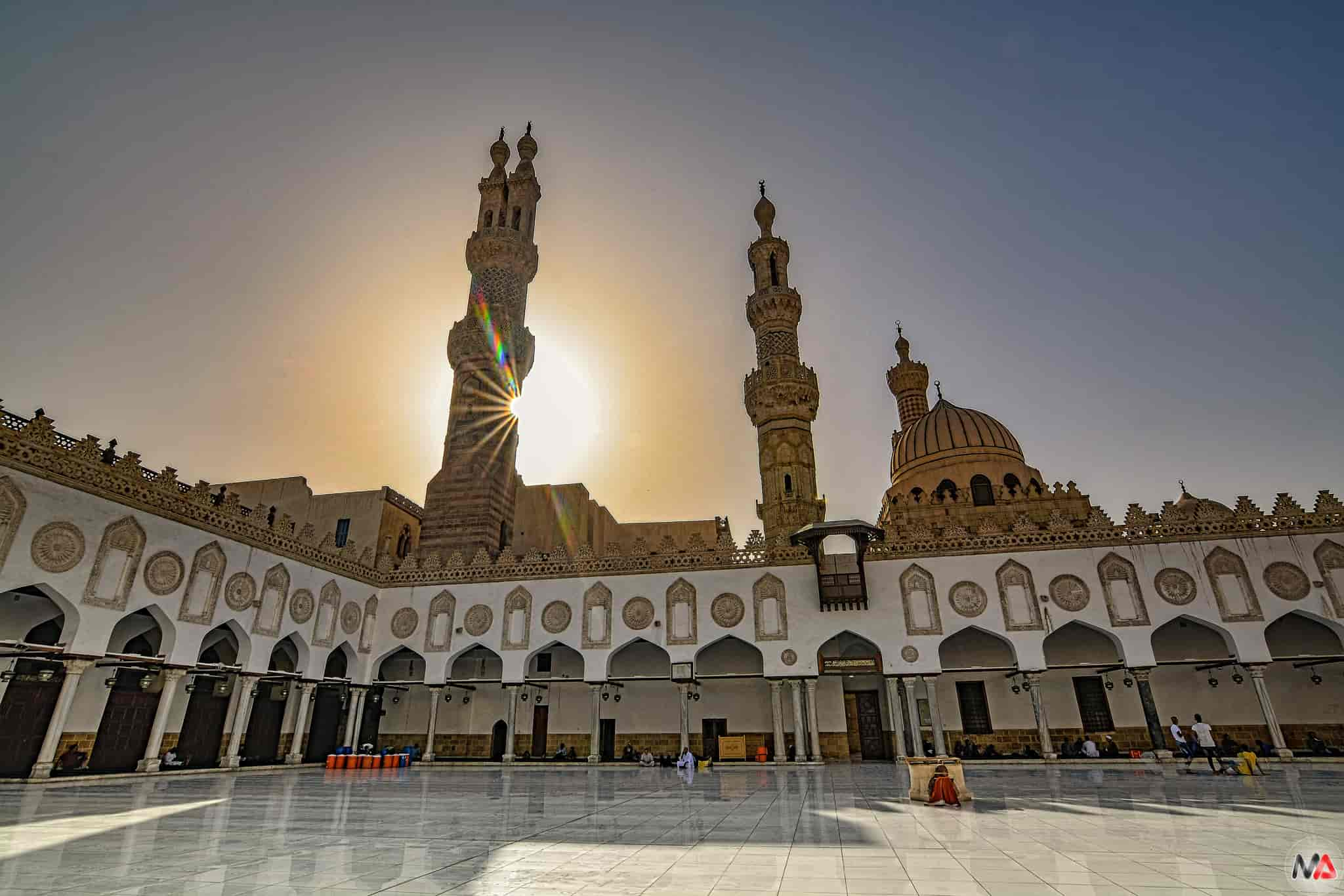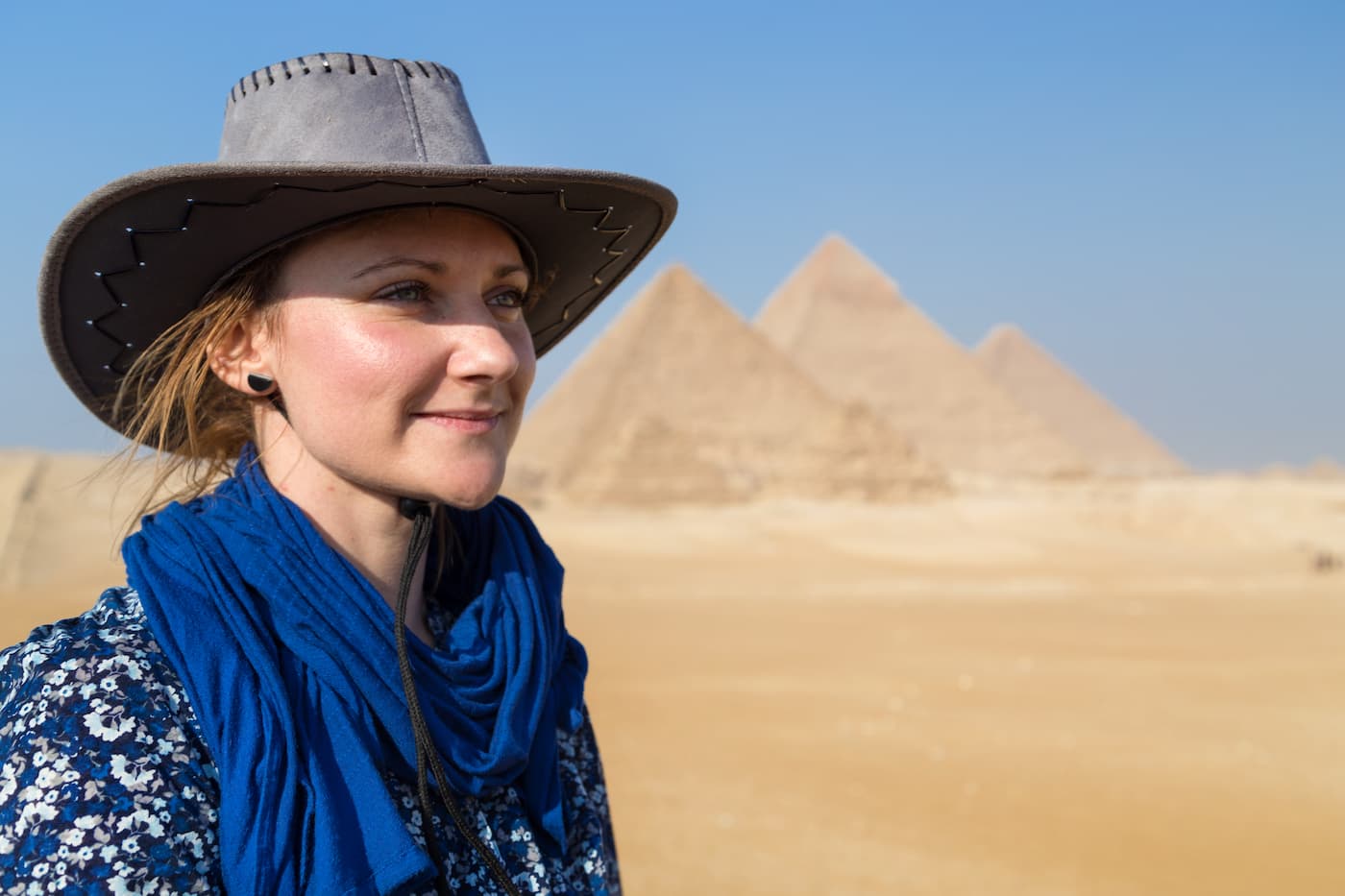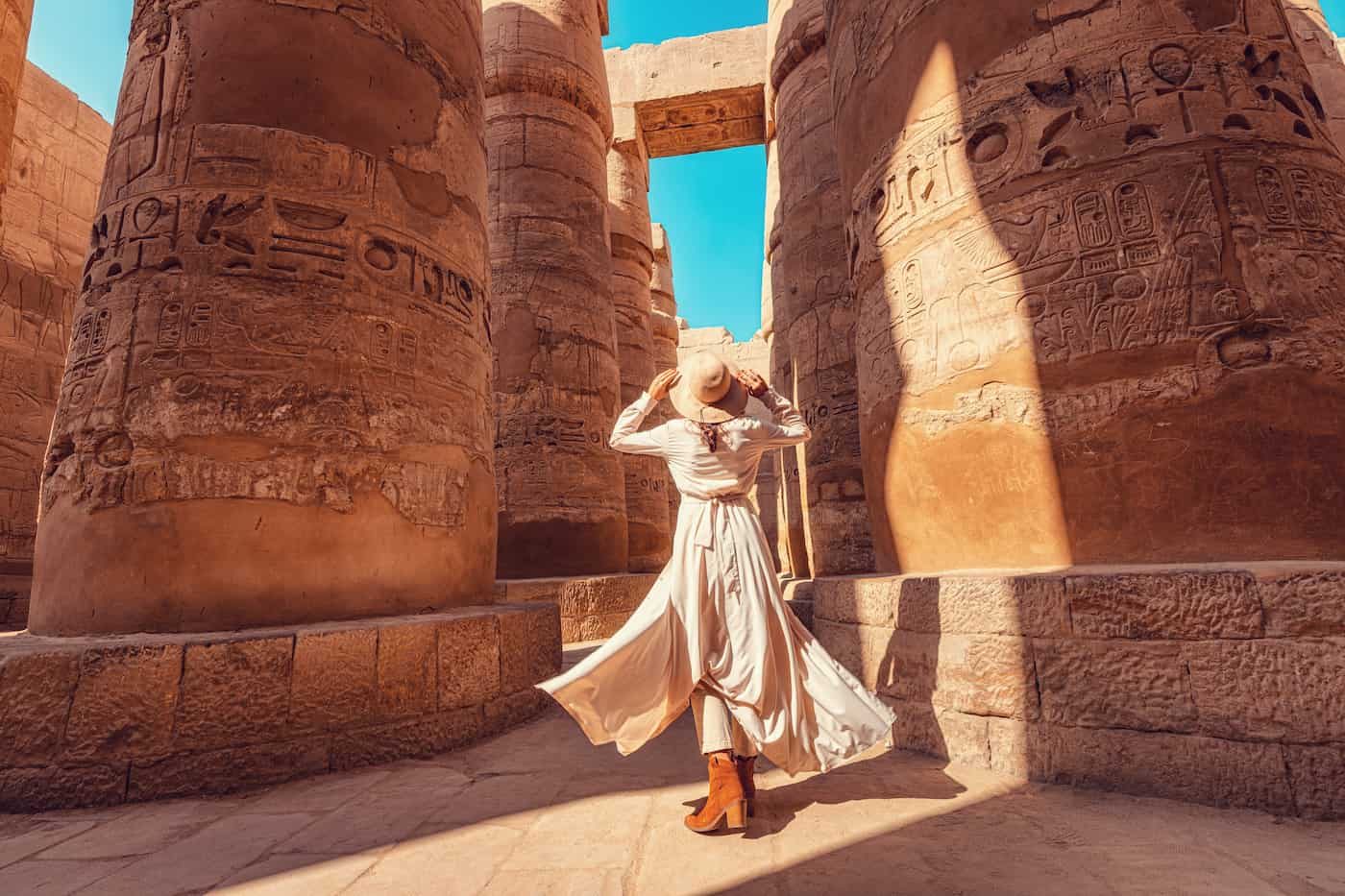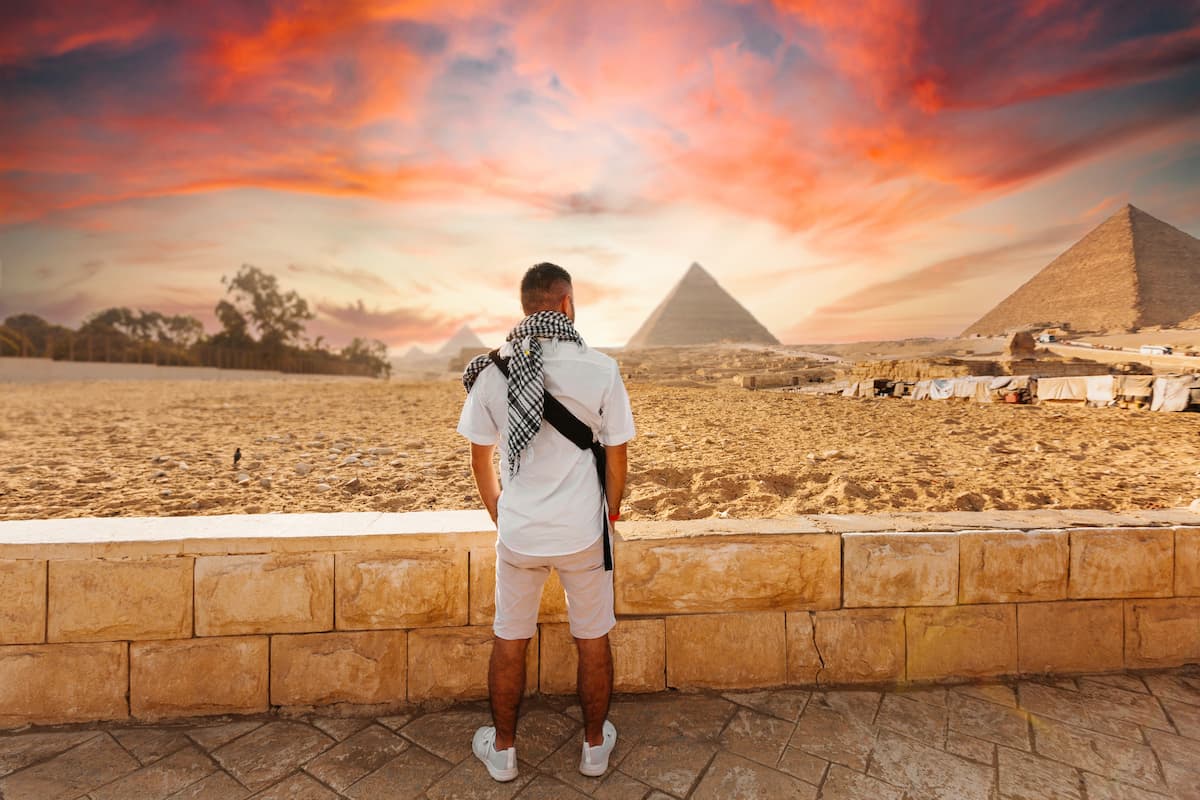Al-Azhar Mosque: A Beacon of Knowledge and Faith
When people think of Islamic Cairo, Al-Azhar Mosque stands out. It’s not just a mosque where people pray, it’s also a symbol of Islamic knowledge, history, and culture. It was over a thousand years ago. Al-Azhar has become one of the most respected Islamic institutions worldwide. It has educated millions of students, influenced Islamic thought, and played a significant role in the religious and political life of the centuries.
Al-Azhar mosque is the most important mosque in Egypt. It is also one of the historical centers for spreading and teaching Islam. It is also one of the most famous ancient mosques in Egypt and the Islamic world.
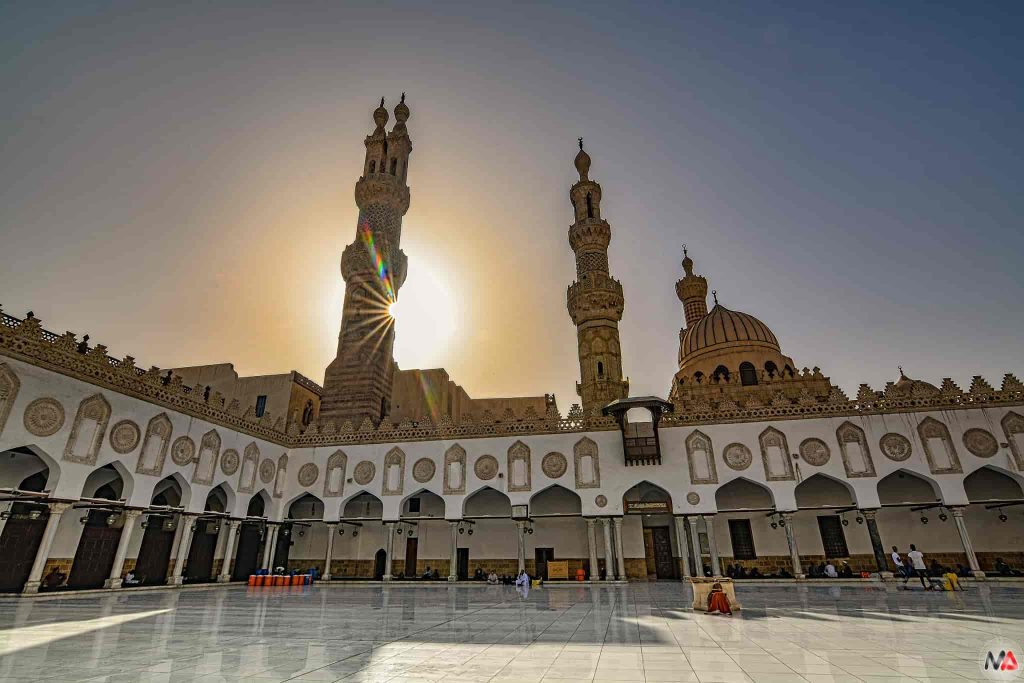
Al Azhar Mosque
Al-Azhar Mosque is not only a qibla of science and a beacon of Islamic civilization or an ancient archaeological mosque, but also an icon of Cairo. It is one of the most important places. The Egyptians are not only in a spiritual relationship with it, but also it is a Centre of tourist attraction from various countries.
The Name of Al-Azhar Mosque
The name “Al-Azhar” comes from Fatimah al-Zahra, who was the daughter of the Prophet Muhammad. This reflects the mosque’s original connection to the Shi’a branch of Islam, since the Fatimids were Ismaili Shi’a.
The History and construction story of Al-Azhar Mosque
1-The Fatimid Dynasty
Its construction was from the beginning of the era of the Fatimid state in Egypt, after Jawhar al-Siqilli completed the conquest of Egypt in the year 969AD. When he thought of establishing Cairo, he began building the Al-Azhar Mosque for the Caliph to pray there.
The first Friday prayer was in it in Ramadan in the year 361 AH / 972 AD. It had another name (the Cairo Mosque)
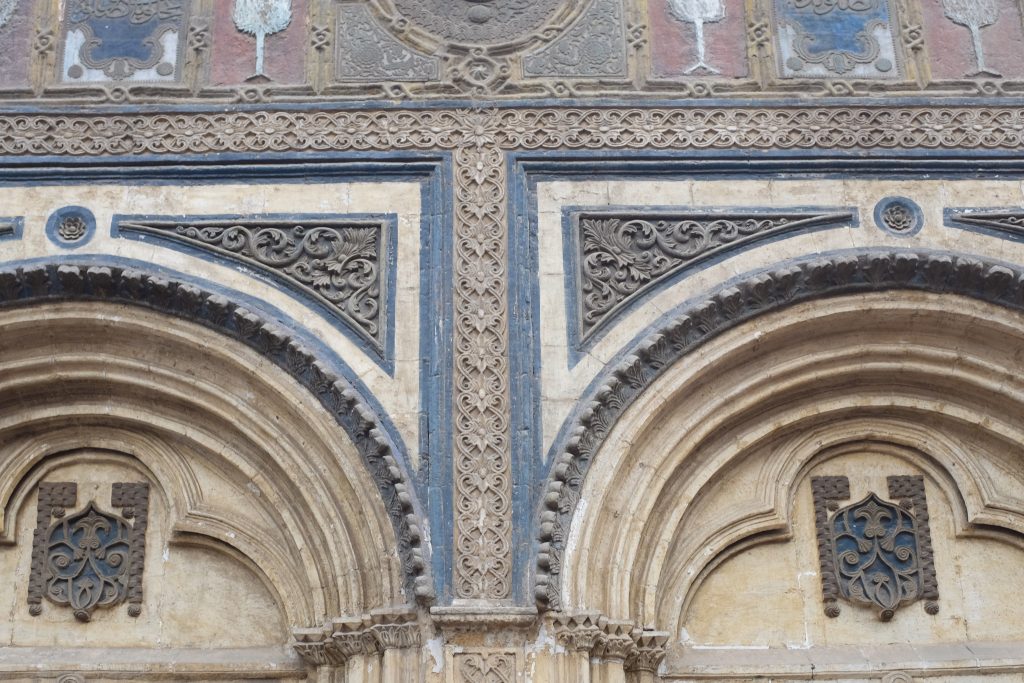
Old mosque
During the Al Hakim Be’amr Alla reign (386-411 AH / 996-1020 AD), he completed the construction of the mosque and imprisoned endowments on it and other mosques. The evidence of these endowments is what Al-Maqrizi mentioned (vol. 2, p. 273 and beyond) from the news of the year 400 AH.
During the era of Caliph Al-Mustansir Billah 427/1035AD – 487AH/1094AD, he slightly increased the construction of the mosque.
During the reign of Al Amer be’ahkam Allah (1096AD – 1130AD), in which he built a mihrab and installed it with wooden inscriptions in 519AH – 1125AD. These inscriptions are still preserved in the House of Arab Antiquities in Cairo.
2-Ayyubid State
Salah al-Din prevented the sermon from the mosque and cut off many of that the ruler had imposed on him during the era of the Ayyubids. About a century passed before the al-Azhar mosque regained the sympathy of the rulers and the country’s leaders.
3-Mamluk State
During the reign of Sultan Al-Zahir Baybars in the year 665 AH (1266-1267 AD), he increased its construction and encouraged education in it, and returned the sermon to it.
Many princes followed his example, and since that time, the mosque became famous and became a scientific institute for people of all ages, and Al-Azhar received a lot of the country’s care.
During the reign of Al-Nasir Muhammad bin Qalawun in 702 AH (1302-1303 AD), the mosque was destroyed because of an earthquake, so the responsibility for the reconstruction was divided between the princes of the Sultanate Asa’arid (from Sa’ard in Armenia).
He also built a structure for the mosque, a fountain for ablution, and all schools and buildings complementing Al-Azhar were built, with separate entrances and prayer halls in 1339-1340.
During the reign of Sultan al-Zahir Barquq (800 AH / 1397-1398 AD), who was the first of the Circassian Mamluks. The mosque was the first to take direct care of it. The minaret of the mosque had fallen, so he built it at once, just as he built a water tank and a path, and set up a fountain.
During the reign of Sultan Qaytbay, He was the most generous patron of the Mamluk sultans to the Al-Azhar Mosque. He increased the construction of the mosque. During the late Mamluk rule, Sultans Qaytbay and Qansuh al-Ghouri made many improvements and additions. Each of the Sultans supervised many reforms and built minarets.
4-Ottoman Empire
At the beginning of the era of the Ottoman Empire in 1517, the sultans showed great respect for the mosque, despite the cessation of direct royal patronage to it. After Sultan Selim I entered Egypt, he attended the Friday prayer at the Al-Azhar Mosque, and then great expansions were made by Abd al-Rahman Katkhuda, who was the head of the Janissaries (the forces of Infantry and knights from the elite of the Ottoman army), and under his direction, they built three new gates to the mosque:
A- Bab al-Muzayin (the Barbers Gate), so named because it was where students came to shave their heads, which eventually became the main entrance to the mosque.
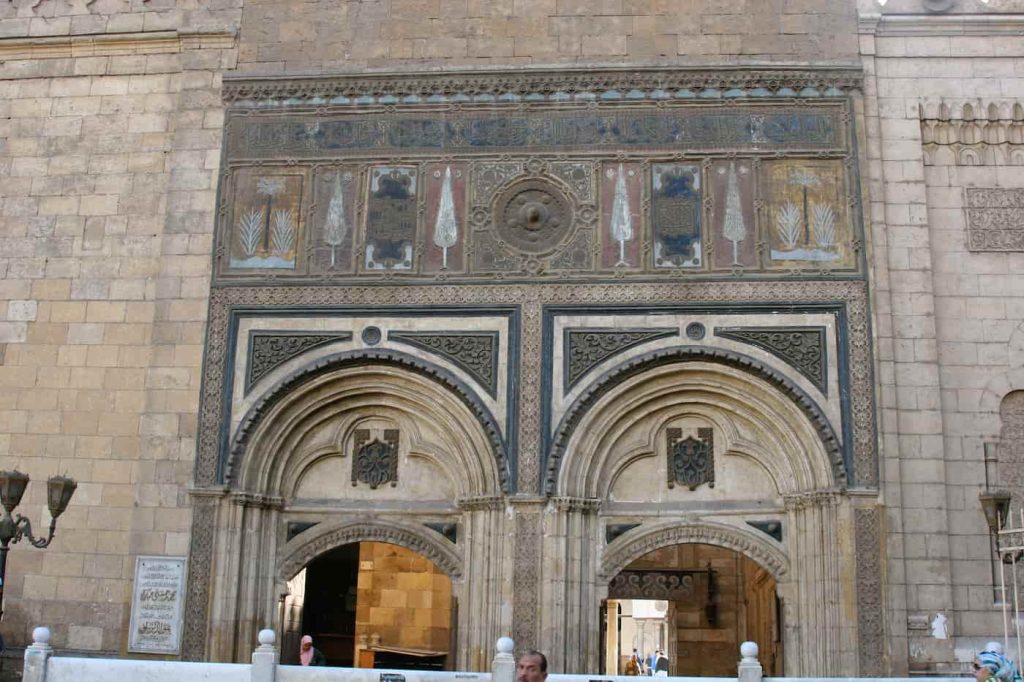
Bab al-Muzayen in Cairo
B-Bab al-Sa’ida, which is for the people of Upper Egypt to enter.
C-ُThe Sheroubeh Gate was established. It is the rice soup and is one of the dishes that are for students. Then they added a prayer hall to the south of the original prayer hall, and the size of the space available for prayer was also doubled. Moreover, Katkhuda renovated or reconstructed many of the corridors that surround the mosque.
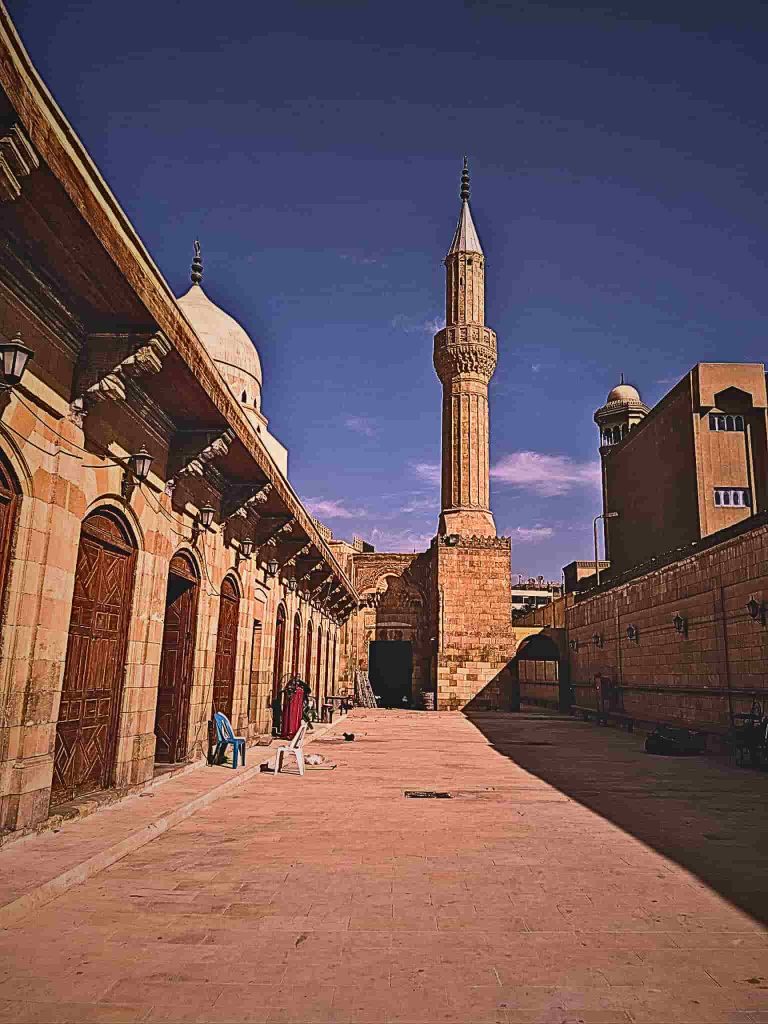
The Sheroubeh Gate
Muhammad Ali Pasha and his sons
Al-Azhar was the focus of the attention of Muhammad Ali Pasha and his family. Khedive Ismail renewed the great Bab al-Sa’ida with what was above it from the office by directing the overseer of endowments, Adham Pasha, in 1865.
In 1931, during the reign of King Ahmed Fouad I, the buildings that were blocking the Al-Azhar Mosque were removed from its western seaside to its sea front, so that between it and the Al-Mashhad Al-Husseini Gate, it became a spacious room.
Al-Azhar Mosque from The Modern Era to the Present
Al-Azhar Mosque has received the attention of the Egyptian state from the foundation of the republic until now.

El Azhar University
During the era of President Gamal Abdel Nasser, many of the properties surrounding it were annexed and demolished to provide space for the modern campus.
In 1955, the mosque ceased to be a school, and official colleges were established for the university.
A law was passed providing for the separation of the dual roles of the educational institution and the religious institution, which was revered throughout the Islamic world in 1961.
In 1998, the president renovated it. The former President, Mohamed Hosni Mubarak, inaugurated it as part of a plan to save the monuments and landmarks of Islamic Cairo. President Hosni Mubarak entered the Al-Azhar Mosque, where he watched the development and renovation works.
In 2014, the Custodian of the Two Holy Mosques, King Abdullah bin Abdulaziz Al Saud, may God have mercy on him, learned that Al-Azhar (the mosque and its scientific institutions) needed a comprehensive restoration process, based on extensive technical reports by experts in UNESCO.
What time does Al-Azhar Mosque open?
The mosque opens from 8 a.m. to 4 p.m.; however, these timings sometimes change. You should avoid midday, mid-afternoon, other prayer timings during the day, and Fridays for a more relaxed tour.
Can we walk into The Mosque?
Everyone is welcome at the Mosque open days, including children accompanied by an adult.
Al Azhar University Begins
The construction of this university transformed Al-Azhar into an institution beyond its original religious purpose. The institution evolved into an educational hub that drew scholars and students from across the Islamic world. The institution began teaching Qur’an, along with Islamic law and language, and philosophy by the 10th century.
The mosque-based teaching circles expanded into what became known as Al-Azhar University. It operates as one of the world’s oldest active universities today.
Al-Azhar University teaches all four Sunni schools of Islamic law and maintains a tolerant stance toward various Islamic perspectives.

Al Azhar University
The university operates multiple faculties, including science, medicine, engineering, economics, and religious studies, in addition to its traditional religious programs. The institution provides students with a complete education through its diverse curriculum which upholds Islamic principles in all their studies
Al-Azhar Mosque Corridors
These corridors calmed down for some time, to return stronger in 2015 and carry the torch of science again. More than a thousand years ago, Al-Azhar Mosque was a beacon of Islamic sciences and a quibble for those who wanted this knowledge.
In its corridors, many kings, sultans, judges, rulers, and from its pulpit, learned Islam and spread it all over the world.
Life returned to the Al-Azhar corridors; circles, lessons, advocacy councils, and weekly lectures organized by the mosque administration for worshipers and university students, Egyptians and foreigners spread in jurisprudence, hadith, interpretation, worship, and transactions, Islamic heritage, books that are re-taught in these seminars, and lessons for students of Al-Azhar University, through its halls.
Many specialized and academic experts from university professors, each in their specialization, developed the work plans of the corridors and drew the executive map for them at the local and international levels.
Examples of these corridors:
1 -The Sharia Sciences gallery:
It relied on the teaching of Sharia and Arabic mental sciences through a tight system of heritage books. These books were in the past at Al-Azhar University to help students understand them. while the mosque presents this scientific material in a manner suitable for the requirements of the age and different age groups, and with modern educational media.
2-Advocacy hall:
It handles advocacy affairs and follows up on regular advocacy activities. These activities include the Friday sermon, preaching lessons, and providing advocacy services that maximize benefit for different segments.
3-Media Gallery:
It means that communicating with local and international media to shed light on the advocacy, scientific, and cultural activities of Al-Azhar Mosque, as well as conducting opinion research and surveys that serve the advocacy work at Al-Azhar University.
Furthermore, it organizes seminars and conferences, managing and updating the Al-Azhar University website on the Internet and interacting with the public on social media sites.
4- Al-Qur’an Gallery:
It aims to return to the old system of booksellers. They had a great impact on the strong memorization of the Qur’an by scholars and sheikhs. This system is through specific sessions of memorization and intonation, training in recitation, and good vocal performance. Memorization is in the Qur’an Gallery by following the methods. These methods take into account the nature of the audience and their different levels.
5-Foreign Languages Gallery:
It works in integrated tracks, including explaining the cultural and historical landmarks of Al-Azhar Mosque to foreign delegations and presenting this in illustrated materials that are published on social media. As well as it provides special programs for new Muslims aimed at introducing them to the landmarks and origins of the tolerant religion in different languages.
6- Al-Maton Gallery:
It focuses on memorizing and explaining the texts composed by Al-Azhar scholars, taking into account the gradation and diversification. All this is due to the different levels of the students ‘ knowledge.
The gallery holds competitions among students in memorizing and understanding fundamental texts. This is to encourage them to memorize them as a guarantee of mastery.
Architecture Through the Ages
Al-Azhar Mosque today is an example of Islamic architecture. The building has been expanded and restored many times over the centuries. The courtyard is large and open, surrounded by elegant arches and columns. They decorated the prayer hall beautifully with Arabic calligraphy and wonderful designs.
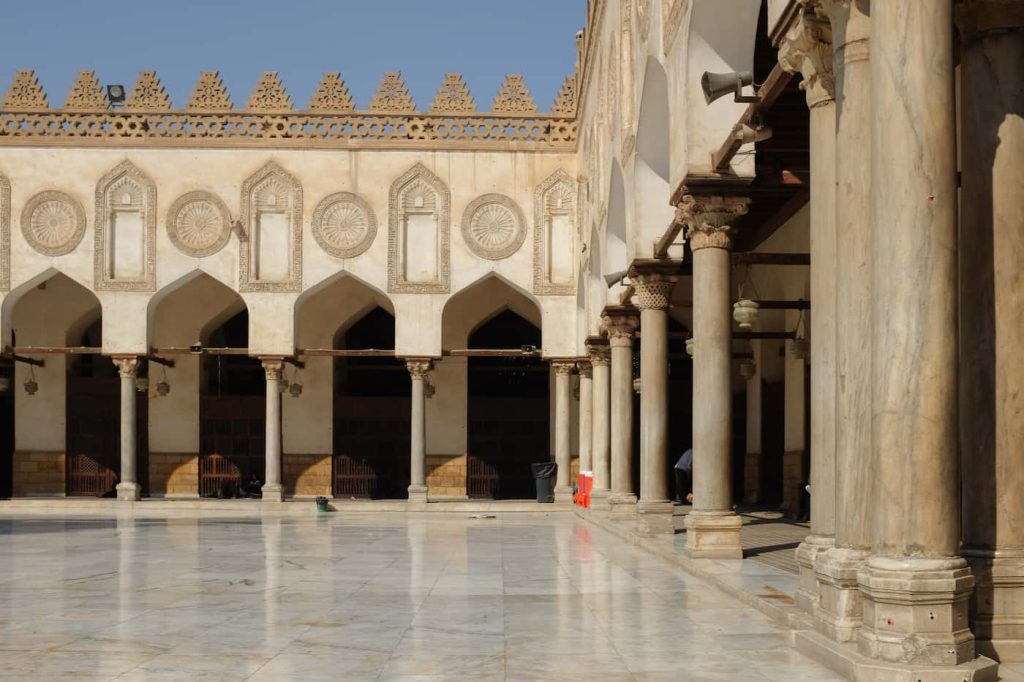
Mosque architectural
There are five minarets, each from a different historical period, showing a mix of Fatimid, Mamluk, and Ottoman styles. Each ruling dynasty left its mark on the mosque, making it an artistic and historical treasure.
The Role of Al-Azhar Mosque in Egyptian and Global Society
Al-Azhar has played a part in Egypt’s politics and social life throughout history: It was against colonialism. It supported reforms during Egypt’s modernization.

Azhar in Cairo, Egypt.
Al-Azhar has become a symbol of Islamic scholarship outside Egypt. As students from Asia, Africa, and the Middle East come to study there. Many graduates return to their countries to become religious leaders, teachers, and thinkers.
Conclusion
In short, Al-Azhar Mosque is a great institution because it unites faith, knowledge, and heritage. It’s not just a place to pray, it has also made the soul of the Islamic world.
Al-Azhar Mosque isn’t just a building. In contrast, it’s a great organization of Islamic history. It has been a place of faith, knowledge, and culture for a thousand years. From its founding under the Fatimids to its role in today’s modern Egypt, Al-Azhar has a specific mission: to teach, guide, and serve.

